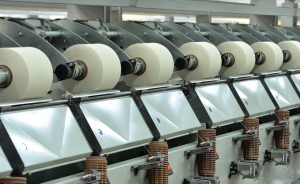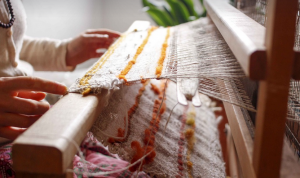
What is Fire-Resistant Mineral Wool?
Imagine a material that can stand the heat – literally. That’s fire-resistant mineral wool in a nutshell. It’s an incredibly versatile insulation option for homes and commercial buildings, boasting impressive resistance to flames and high temperatures.
Fire-resistant mineral wool is made from volcanic rock fibers that have been carefully processed and treated to enhance their properties. These materials are primarily comprised of naturally occurring basalt or other igneous rocks.
The key to their fire-resistance lies in the way these fibers react to heat and flame. They’re essentially tiny, interwoven “air pockets” that create a barrier against rapid fire spread. When exposed to high temperatures, the mineral wool doesn’t melt or combust like conventional materials, instead, it acts as a fire retardant.
While they might seem like something out of a science lab, these wonder-materials are readily available and can be incorporated into various building projects.
Why Choose Fire-Resistant Mineral Wool?
There’s a lot of reasons to choose fire-resistant mineral wool as your insulation material, particularly in areas with high risk of wildfire or accidental fires:
**Safety First:** The primary reason is safety. Fire-resistant mineral wool offers an essential layer of protection against flames and heat. This means that in the unfortunate event of a fire, the spread of fire through your walls, roof, or insulation can be significantly slowed down.
**Regulation Compliance:** Fire-resistant mineral wool meets strict building codes due to its inherent safety features and flame-retardant qualities. These products are often required by building authorities for certain applications such as high-risk zones or buildings that house vulnerable populations like children.
**Environmentally friendly:** Mineral wool is a natural, renewable resource that contributes to a more sustainable future. It’s naturally heat and sound resistant, making it an excellent choice for energy saving. The materials are also recyclable at the end of their lifespan, which reduces waste and environmental impact.
**Versatility:** Fire-resistant mineral wool offers remarkable versatility across various construction projects. From residential homes to commercial buildings to industrial settings, its performance is consistent across a range of applications.
The Benefits of Using Fire-Resistant Mineral Wool:
There are numerous benefits to using fire-resistant mineral wool in your home or building project:
**Improved fire resistance:** This insulation can significantly slow down the spread of flames and heat, allowing you more time to evacuate safely.
**Increased safety for occupants:** This type of insulation provides a significant layer of protection, offering peace of mind and reducing potential risks during fires.
**Cost-effectiveness:** While it may seem like an investment, fire-resistant mineral wool often saves on future costs by minimizing the need for costly repairs or replacements after fires.
**Energy efficiency:** This insulation keeps your home warm in winter and cool in summer, saving you money on energy bills year-round.
**Excellent performance:** Fire-resistant mineral wool delivers consistent, reliable performance over time, proving to be a worthy long-term investment for any construction project.
Installation: A Simpler Process Than You Might Think
Installing fire-resistant mineral wool is typically less complicated than you might expect. It can be easily integrated into existing building structures through various methods, including:
**Spray Foam Insulation:** Fire-resistant mineral wool can be incorporated as a component of spray foam insulation for walls and ceilings.
**Standard Insulation Installation:** It can also be sprayed in place like other types of insulation. This method is quick, cost-effective, and allows for precise installation depending on your specific needs.
**Batt or Board Installation:** Fire-resistant mineral wool can be installed as individual batt or board inserts into walls or roofs to provide additional fire protection.
Choosing the Right Type of Fire-resistant Mineral Wool
There are various types of fire-resistant mineral wool available on the market, each with its own set of properties and applications. When selecting a product for your project, consider:
**Type of Rock:** The type of rock used to make the mineral wool can affect its overall performance and durability. For example, basalt is known for its high temperature resistance and excellent thermal stability.
**Density and Thickness:** These features determine how effectively the insulation absorbs or reflects heat and sound. Higher density generally translates to higher fire resistance.
**Fire Rating Classification:** Look for products with a certified fire rating (ASTM E84, UL-1027) to ensure they meet your specific building codes.
**Warranty and Certifications:** Choose brands that offer comprehensive warranties and certifications from organizations like the Underwriters Laboratories.
The Future of Fire-Resistant Mineral Wool: A Sustainable Choice
As our world becomes more aware of sustainability, fire-resistant mineral wool is making its mark in several ways.
**Eco-friendly Production:** The production process itself aligns with sustainable practices, reducing reliance on fossil fuels and utilizing renewable resources.
**Recyclable and Sustainable Material:** Its long lifespan and recyclability contribute to a more circular economy, lessening landfill waste.
**Energy Savings:** It helps homeowners and businesses reduce energy consumption by creating a more comfortable indoor environment.
As research continues, we can expect innovative applications of fire-resistant mineral wool in the future, such as its use in smart buildings that prioritize safety, sustainability, and efficiency.



